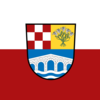Šuica (Tomislavgrad)
|
Šuica Šujica |
|||
|---|---|---|---|
| Village | |||

Šujica Valley
|
|||
|
|||
| Coordinates: 43°50′19″N 17°11′02″E / 43.83861°N 17.18389°E | |||
| Country | Bosnia and Herzegovina | ||
| Entity | Federation of Bosnia and Herzegovina | ||
| Canton | Canton 10 | ||
| Municipality | Tomislavgrad | ||
| Historical region | Tropolje | ||
| Elevation | 925 m (3,035 ft) | ||
| Population (1991) | |||
| • Total | 1,446 | ||
| Time zone | CET (UTC+1) | ||
| • Summer (DST) | CEST (UTC+2) | ||
| Postal code | 80249 | ||
| Šuica Half Marathon | |
|---|---|
| Date | August |
| Location | Kupres, Šuica |
| Event type | Road |
| Distance | Half marathon |
| Established | 2006 |
| Course records | 1:09:46 |
Šuica (or Šujica) is a village in the municipality of Tomislavgrad in western Bosnia and Herzegovina.
The village is named after the river Šuica. The very name, signifies not only the settlement but also the area of Šuica Valley around the upper course of the river where there are several villages situated at the crossroads of Bosnia, Dalmatia and Herzegovina.
Area of the Šujica Valley was inhabited at least since the time of the Illyrians. Among the few remains of the Illyrian tribe Delmatae there are several tombs. More archaeological remains date from the time of Roman rule in this area. Through the Valley passed the Roman trade and military road connecting cities of Salona and Servitium. It passed east of the river Šujica source in Stržanj where a fortress that served as a watchtower was located.
The name of Šuica was first mentioned in 1516 in the Ottoman census of taxpayers as a settlement in nahiye Kupres in the kadiluk of Neretva. The census mentions the village Šuica with seven Christian houses. Fifteen years later, the second list mentions 34 residents of Šuica who serves as guardians of the gorge (probably Stržanj) and were thus exempt from all taxes except the one for cereals.
In 1550, it was noted that the Venetian ambassador Catarino Zeno who was on his way to Istanbul, stayed in Svizza, in a very comfortable guesthouse.
Bishop Pavo Dragicevic who was on a pastoral visit to the extinct Diocese of Duvno in 1741 and 1742, registered 5 houses and 46 residents in Suiza, while in 1768 bishop Marijan Bogdanović registered 14 houses and 161 residents.
...
Wikipedia



